Kamakura; First Samurai Capital Walking Tour—A Deep Dive into Japan’s Historic Heart
If you’re planning a day trip to Kamakura, this guided walking tour offers a well-balanced mix of history, spirituality, and craftsmanship. For just $47, you’ll spend around three hours exploring key sites like Tsurugaoka Hachimangu Shrine, the Zen temples of Enkaku-ji and Kencho-ji, and a fascinating visit to the Kamakura Lacquerware Museum. Your guide, Yurie, is praised for her friendly demeanor and wealth of knowledge, making this experience both educational and engaging.
What we love about this tour is how it combines iconic landmarks with lesser-known treasures, giving you both the grandeur of Kamakura’s religious architecture and the subtle beauty of its traditional crafts. Plus, the chance to walk through scenic Dankazura, a cherry blossom-lined pathway, makes it a visual treat. On the downside, the tour involves quite a bit of walking and stairs, which might be a consideration for those with mobility issues. This tour suits history buffs, art lovers, and anyone wanting a meaningful glimpse into Kamakura’s past, especially if they enjoy a personable guide who can weave stories into the experience.
Key Points
- Authentic Experience: Combines visiting revered temples with learning about traditional Kamakura lacquerware.
- Expert Guide: Knowledgeable hosts like Yurie enhance understanding with engaging stories.
- Balanced Itinerary: Mix of spiritual, historical, and artistic highlights.
- Value for Money: For $47, you get a comprehensive introduction to Kamakura’s culture plus museum entry.
- Accessible to Most: While not suitable for wheelchairs or those over 95, the tour is ideal for active travelers interested in history.
- Scenic & Cultural: Walk along cherry blossom-lined avenues, visit ancient temples, and explore Japan’s first samurai capital’s spiritual heart.
Exploring Kamakura: A Walk Through History and Craftsmanship
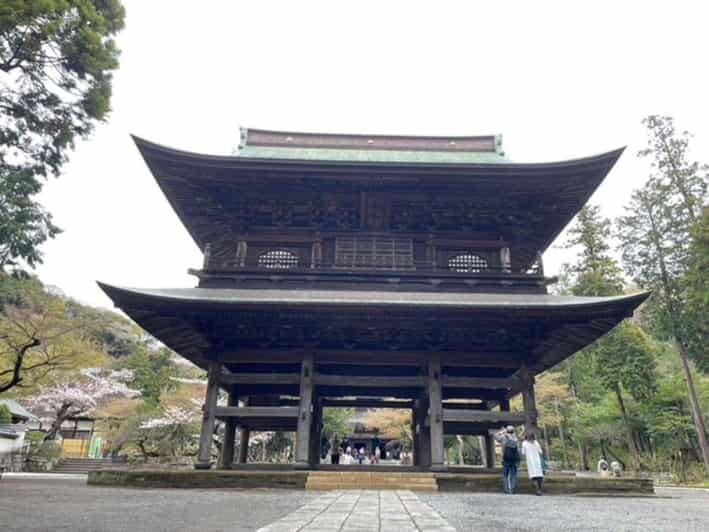
Kamakura’s reputation as Japan’s first Samurai capital makes it a compelling destination for anyone curious about the roots of Japanese martial and religious traditions. This tour offers a curated look at some of its most symbolic sites, blending history with local artistry in a way that feels both authentic and accessible.
You’ll start at Kita-Kamakura Station, a quiet yet historic hub, where your guide Yurie will meet you outside the ticket gate. From there, the journey begins with a short walk to Enkaku-ji, Kamakura’s second most important Rinzai-Zen temple. This temple’s calm surroundings and historical significance set the tone for the day. You’ll enter through its grand Sanmon Gate, and marvel at the Buddha Hall, where a serene Buddha statue resides, reminding us of the spiritual depths of Zen Buddhism.
Planning more time in Kamakura? We've covered other experiences worth considering.
Zen Temples and Their Hidden Stories
Enkaku-ji’s Hatto (Dharma Hall) is famous for a ceiling mural depicting a dragon, a detail that hints at the artistry often hidden inside these ancient structures. Climbing 135 stairs to visit the Bonsho (Temple Bell)—an 800-year-old national treasure—offers a tangible link to Kamakura’s past. This bell, which greets visitors after the climb, encapsulates the craftsmanship and spiritual significance of temple bells in Japanese tradition.
Next, you’ll walk a few minutes to Kencho-ji, Kamakura’s most prestigious Zen temple. Its Sanmon Gate, Butsuden, Hatto, and Bonsho—all scaled up—are highlights that showcase the grandeur of Kamakura’s religious architecture. While Butsuden is closed for maintenance until 2027, the other structures still provide a sense of the temple’s scale and historical importance.
The Majestic Tsurugaoka Hachimangu Shrine
From Zen temples, the tour transitions to the Tsurugaoka Hachimangu Shrine, Kamakura’s most iconic landmark. Built to demonstrate the power of the first Shogun, this shrine has been Kamakura’s spiritual symbol for over 800 years. Positioned on a hilltop, it offers sweeping views of the city and the surrounding landscape, perfect for photos.
Walking along the Dankazura, a 450-meter cherry blossom-lined walkway built to symbolize the connection between heaven and earth, reveals the city’s historical planning. Originally constructed by the first Shogun to pray for a safe heir, this pathway remains a scenic highlight—especially during cherry blossom season, when the sight of pink blooms enhances the spiritual atmosphere.
Traditional Crafts and Local Art
A notable feature of this tour is the visit to the Kamakura Lacquerware Museum. Established as a cherished traditional craft, Kamakura Lacquerware dates back 800 years, initially made by Buddhist sculptors. Today, this craft has expanded beyond ritual objects to everyday items like tea ware, appreciated for their beauty and durability.
As you explore the museum, you’ll see works from the Muromachi period (1336-1568) to modern pieces, gaining insight into how Kamakura’s artisans have preserved and evolved their craft through centuries. Reviews highlight guides like Yurie’s passion for this art form, which helps deepen your appreciation for Japan’s meticulous craftsmanship.
More Great Tours NearbyThe Experience: What to Expect
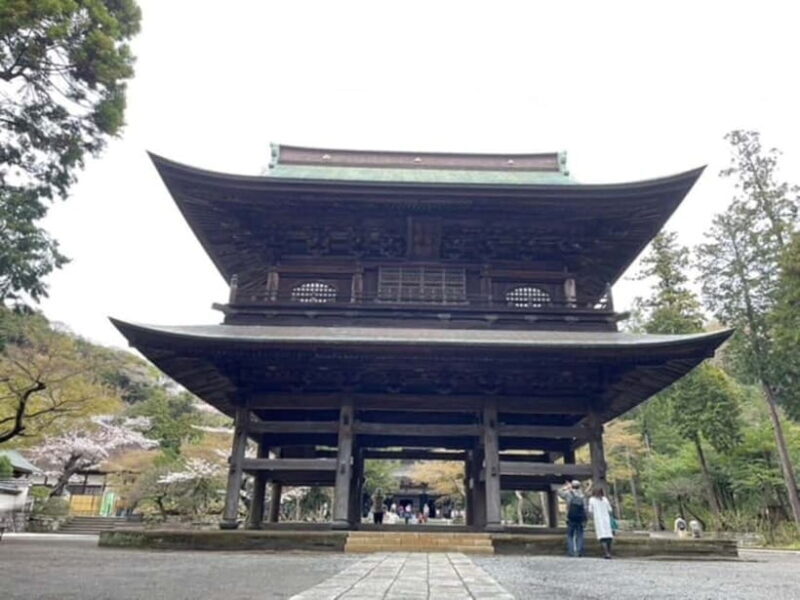
This tour is designed for those who enjoy history, architecture, and traditional arts. The 3-hour experience includes visiting two Zen temples, a historic shrine, and the lacquerware museum. The walking is steady but involves some ups and downs and stairs, so comfortable shoes are a must.
Admission fees are not included in the tour price, typically costing around 500 yen per temple, plus a small fee for the museum. You should bring cash for these, as well as for any souvenirs or optional purchases. The guide provides a hand-drawn map for exploring on your own afterward, which many reviews find very helpful.
Preparing for weather is important—bring hats, water, and sunscreen if it’s sunny, and an umbrella if rain is forecasted. The tour runs rain or shine, so dress accordingly.
- From Tokyo: Kamakura and Enoshima 1-Day Bus Tour
- From Tokyo: Kamakura 8-Hour Private Walking Tour with Guide
- From Tokyo: Kamakura Private Customize Tour by Luxury Van
- Izakaya Bar Hopping in Ofuna: A Taste of Local Japan
- Kamakura Tour with Pro Photographer: Great Buddha & Hase
- Kamakura and Historic Sites Guided Tour
Highlights from Reviews
Many guests praise Yurie’s deep knowledge and engaging storytelling. One reviewer appreciated how she “studied a lot of history,” making the experience more meaningful. Others mention how peaceful and relaxed Kitakamakura feels, a welcome contrast to busy Tokyo. The visit to the Kamakura Lacquerware Museum was described as “very worth to see,” especially for art lovers.
Some travelers noted that the scenic walk along Dankazura is a highlight, especially during cherry blossom season, and that the magnificence of the temples makes it clear why Kamakura remains a spiritual and cultural hub.
Practical Tips for Making the Most of Your Tour
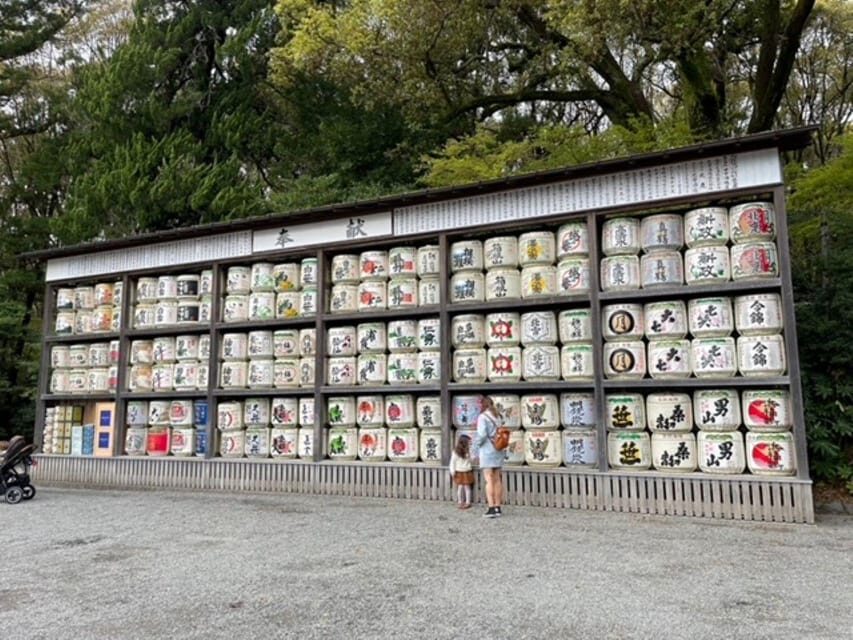
- Book in advance to secure your spot, especially during peak seasons.
- Arrive at Kita-Kamakura Station, east exit, a few minutes early.
- Wear comfortable shoes—there will be quite a bit of walking, stairs, and uneven surfaces.
- Bring cash for temple entry fees and any souvenirs.
- Pack water, hats, and sunscreen, particularly if visiting in summer.
- The tour is not suitable for wheelchair users or those over age 95, due to stairs and walking distances.
- The guide offers flexibility with the “reserve & pay later” option, which is handy if your plans change.
Who Should Consider This Tour?

This experience is ideal for visitors who want more than just a quick glance at Kamakura’s sights. If you enjoy learning about Japan’s spiritual traditions, exploring traditional crafts, and walking through scenic historic streets, this tour hits all those points. It’s especially well-suited for history buffs, art enthusiasts, and those who appreciate a personable guide willing to share insider stories.
Travelers looking for a balanced, meaningful introduction to Kamakura will find this tour a valuable investment. It offers enough depth without overwhelming, and the local guide’s enthusiasm makes learning about Kamakura’s past genuinely enjoyable.
The Sum Up
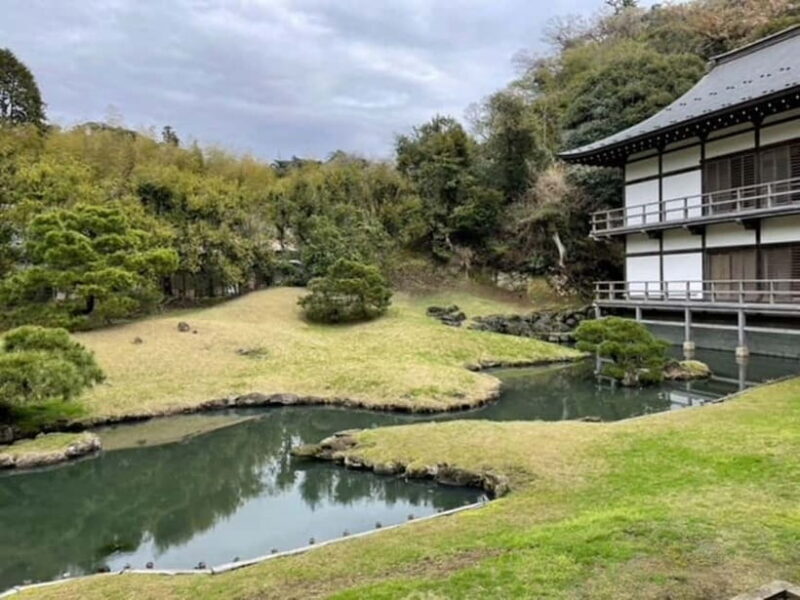
This walking tour of Kamakura offers a compelling blend of religious history, cultural craftsmanship, and stunning scenery. For just $47, you gain access to some of Kamakura’s most revered temples and shrines, along with an insightful look into its traditional arts, all led by a guide praised for her friendliness and knowledge.
It’s perfect for those who want a well-organized, authentic experience that covers key historical sites without feeling rushed. While the physical demands might not suit everyone, active travelers who enjoy walking and exploring will find it rewarding.
This tour provides a meaningful window into Japan’s first Samurai capital, making it a worthwhile addition to your Kanagawa adventures. Whether you’re fascinated by temples, art, or history, you’ll leave with a greater appreciation for Kamakura’s enduring legacy.
FAQ
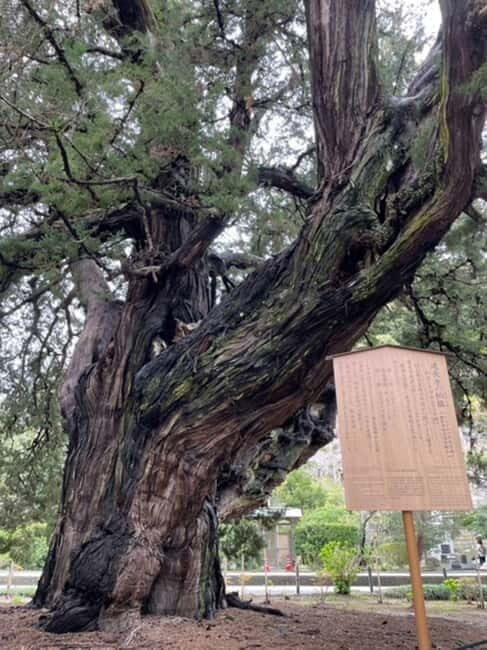
How long is the tour?
It lasts approximately 3 hours, covering several major sites in Kamakura.
What is included in the price?
Your guide-led experience in English and admission to the Kamakura Lacquerware Museum.
Are temple entrance fees included?
No, typically around 500 yen per temple, so bring cash.
Is the tour suitable for children?
The tour involves walking and stairs, so it’s best for active children capable of walking for several hours.
Are there any special clothing requirements?
Comfortable shoes are a must—dress for walking and consider weather-appropriate clothing.
Can I do this tour if I have mobility issues?
Not really, as there are stairs and uneven paths; it’s not suitable for wheelchairs.
What if it rains?
The tour runs rain or shine, so bring rain gear or an umbrella.
Is the tour available in languages other than English?
It is conducted in English; other languages are not specified.
Can I cancel the tour?
Yes, cancellations are accepted up to 24 hours in advance for a full refund.
Is there a recommended age limit?
While not strictly specified, it’s best for those comfortable with walking and stairs, under 95 years old.
Embark on this journey to Kamakura for a glimpse into Japan’s rich samurai and spiritual culture. With its carefully curated sites and engaging guide, it’s an experience that balances education, beauty, and local tradition—perfect for those eager to see beyond the typical tourist spots.
You can check availability for your dates here:More Walking Tours in Kamakura
More Tours in Kamakura
More Tour Reviews in Kamakura
- Kamakura Half Day Walking Tour with Local Experience
- Kamakura: Private History and Heritage Tour by Rickshaw
- Kamakura Historical Walking Tour with the Great Buddha
- Kamakura Zen: Great Buddha, Nature, Bamboo & Samurai Culture
- Kamakura: Zen Walking Tour
- Kamakura Full-Day Private Tour from Tokyo (Customizable)
More Kamakura experiences we've covered
- Kamakura: Private History and Heritage Tour by Rickshaw
- Kamakura Historical Walking Tour with the Great Buddha
- Kamakura Zen: Great Buddha, Nature, Bamboo & Samurai Culture
- Kamakura: Zen Walking Tour
- Kamakura Full-Day Private Tour from Tokyo (Customizable)
- Kamakura: Sushi Roll Bento Cooking Class
- Kamakura (Ofuna) : Ramen Crawl Tour with a Local Guide
- Kamakura: Visit the Great Buddhas & Mysterious Cave Temple
- Kamakura: Night Izakaya Bar Hopping Tour
- Kamakura 6 hr Private Guided Tour & Kimono Experience
- Kamakura : Full Day with local guide.
- Kamakura: Visit Daibutsu and shopping experience
